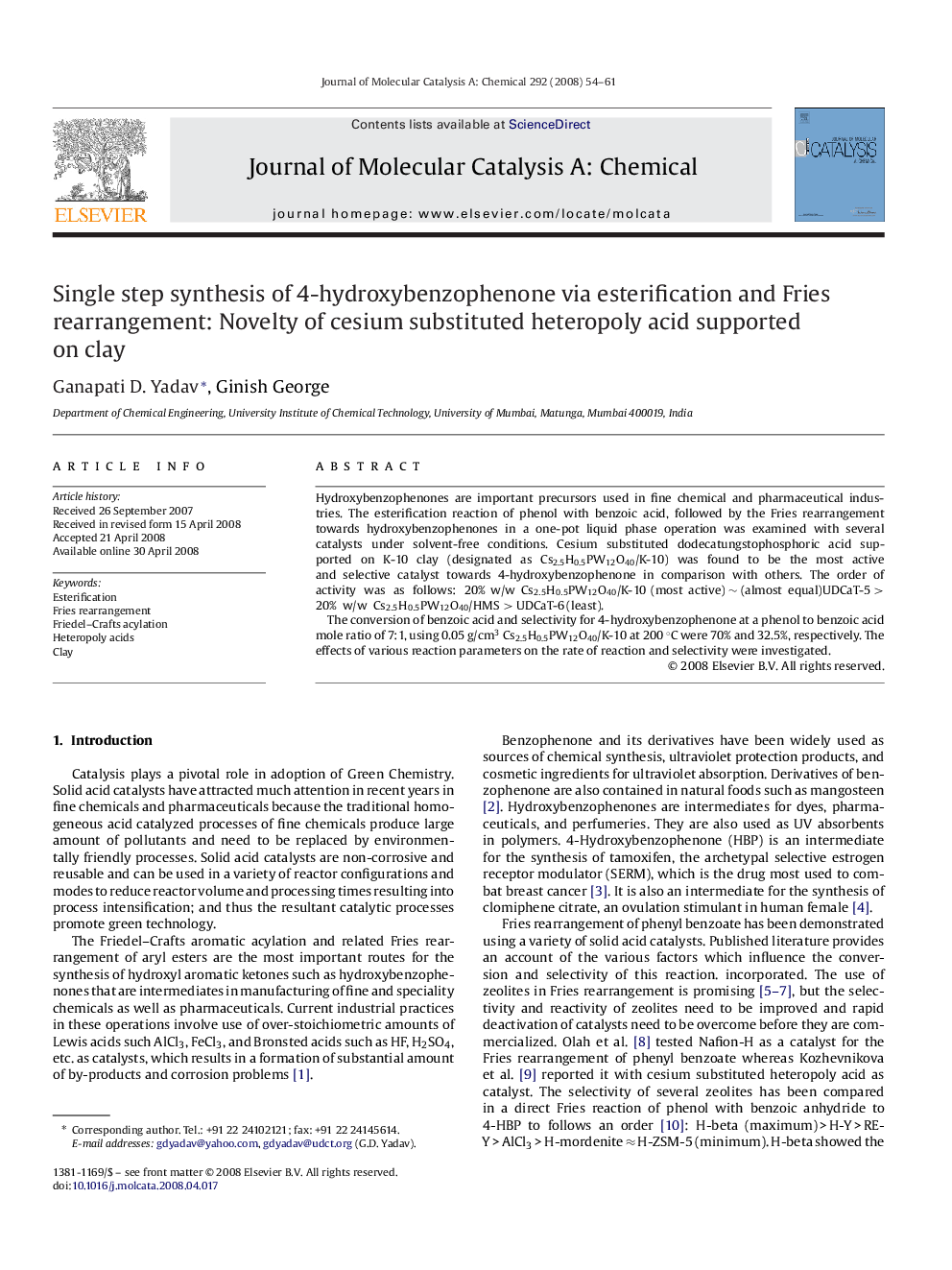| Article ID | Journal | Published Year | Pages | File Type |
|---|---|---|---|---|
| 67542 | Journal of Molecular Catalysis A: Chemical | 2008 | 8 Pages |
Hydroxybenzophenones are important precursors used in fine chemical and pharmaceutical industries. The esterification reaction of phenol with benzoic acid, followed by the Fries rearrangement towards hydroxybenzophenones in a one-pot liquid phase operation was examined with several catalysts under solvent-free conditions. Cesium substituted dodecatungstophosphoric acid supported on K-10 clay (designated as Cs2.5H0.5PW12O40/K-10) was found to be the most active and selective catalyst towards 4-hydroxybenzophenone in comparison with others. The order of activity was as follows: 20% w/w Cs2.5H0.5PW12O40/K-10 (most active)∼(almost equal)UDCaT-5>20% w/w Cs2.5H0.5PW12O40/HMS>UDCaT-6 (least)20% w/w Cs2.5H0.5PW12O40/K-10 (most active)∼(almost equal)UDCaT-5>20% w/w Cs2.5H0.5PW12O40/HMS>UDCaT-6 (least).The conversion of benzoic acid and selectivity for 4-hydroxybenzophenone at a phenol to benzoic acid mole ratio of 7:1, using 0.05 g/cm3 Cs2.5H0.5PW12O40/K-10 at 200 °C were 70% and 32.5%, respectively. The effects of various reaction parameters on the rate of reaction and selectivity were investigated.
Graphical abstractAmong various catalysts, 20% (w/w) Cs2.5H0.5P12W40/K-10 leads to a conversion of 70% in 3 h at 200 °C for a benzoic acid to phenol mole ratio of 1:7 and a catalyst loading of 0.05 g/cm3 in a single pot synthesis. The best selectivity for 4-hydroxybenzophenone was 32.5%. Figure optionsDownload full-size imageDownload as PowerPoint slide
